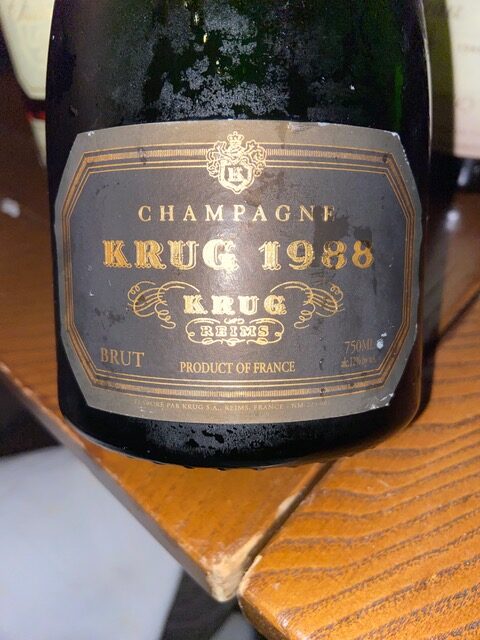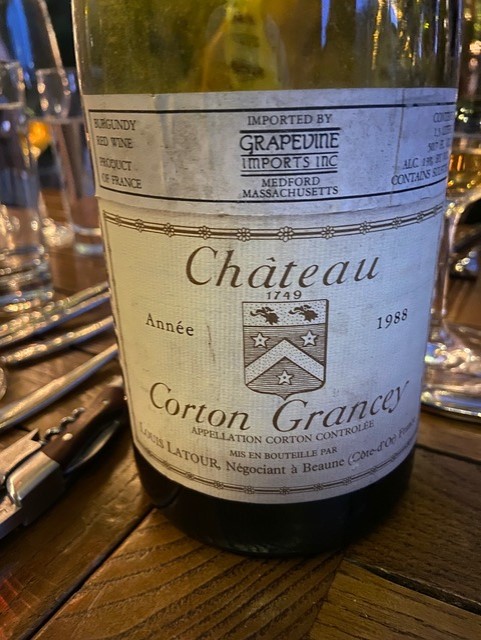Choosing the best of 2023 is easy for me—the marriage of both our daughters to men we like and admire. Of course, wine played a role in the numerous celebrations that accompanied the weddings. We uncorked and drank many birth year wines, 1988 and 1992, that I had purchased soon after the kids were born, which reminded me of important lessons that I’d like to pass on.
Most importantly, wine is not just about the wine. It’s not consumed in a vacuum. I suspect all these wines tasted better because of the setting in which they were consumed and the memories they evoked.
The still youthful 1992 magnum of Château Latour, packed with that Pauillac power of tar and minerals, showed that great producers excel even in tough years! Echoing that sentiment were the elegant and graceful—and ready to drink but not tired—magnum of 1992 Léoville Las Cases.

Seven-fifties of the 1992 stablemates Taylor Fladgate and Fonseca, both still youthful at 30 years of age, proved how great producers can turn out monumental wines in superb years. These both need another decade, at least. My daughter will no doubt open the magnums of these at her kids’ weddings!

Celebrations require Champagne and no Champagne is better than Krug. The caramel-y yet fresh and vigorous1988 was testimony to Krug’s justified fame and a reminder of just how splendidly Champagne can develop with bottle age.

Louis Latour’s stunning 1988 Corton Grancey, from magnum, was quintessential Burgundy, showing what I call flavor without weight. Its stature was evident when my red-wine-averse son-in-law asked for a second glass. It upheld the Grand Cru reputation of that appellation.

A splendid bottle of 1988 Château Lafaurie Peyraguey reminded me to open more Sauternes during the year. What is seldom perceived is how resilient these wines are. More to the point, they don’t deteriorate after being opened and can hold up in bottle, unchanged, in the fridge for a week or more. The elegant nuances of apricots in the 1988 Lafaurie Peyraguey remained evident and fresh even after being uncorked—and forgotten—in the fridge for a week.
And speaking of the virtue of large bottles, an imperial (6 liters) of brilliant 1988 Château Talbot was the perfect size for a large rehearsal dinner. The hard tannins of the 1988 Bordeaux vintage had melted away, revealing the suave grandeur and grace of this classic St. Julien. Amazingly, even at 35 years of age, the Talbot expanded as it sat in the glass! I well remember how impenetrable and tightly wound this wine was in its youth. Yet, I also remember how balanced it was even then. The lesson: If a wine is balanced in its youth do give it the time it needs to show at its best.
Not all were birth year wines. The still fresh and glorious magnum of 1989 Louis Latour Corton-Charlemagne was, unsurprisingly, even better than from a normal sized bottle. It’s complexity, elegance and richness were astounding for a 34-year white wine. It reminded me that great white Burgundy, like great red Bordeaux, reach a plateau and stay there for years or even decades.
My advice, if you have adequate storage, is to buy big bottles of age-worthy wines from producers you like, even in less than grand years. You will have events—graduations, engagements, births—to celebrate down the road.
Speaking of the best. This article was, for me, my most enjoyable one to write in 2023, because, like the wines, it brought back happy memories. So, thank you Ian for suggesting the topic.
